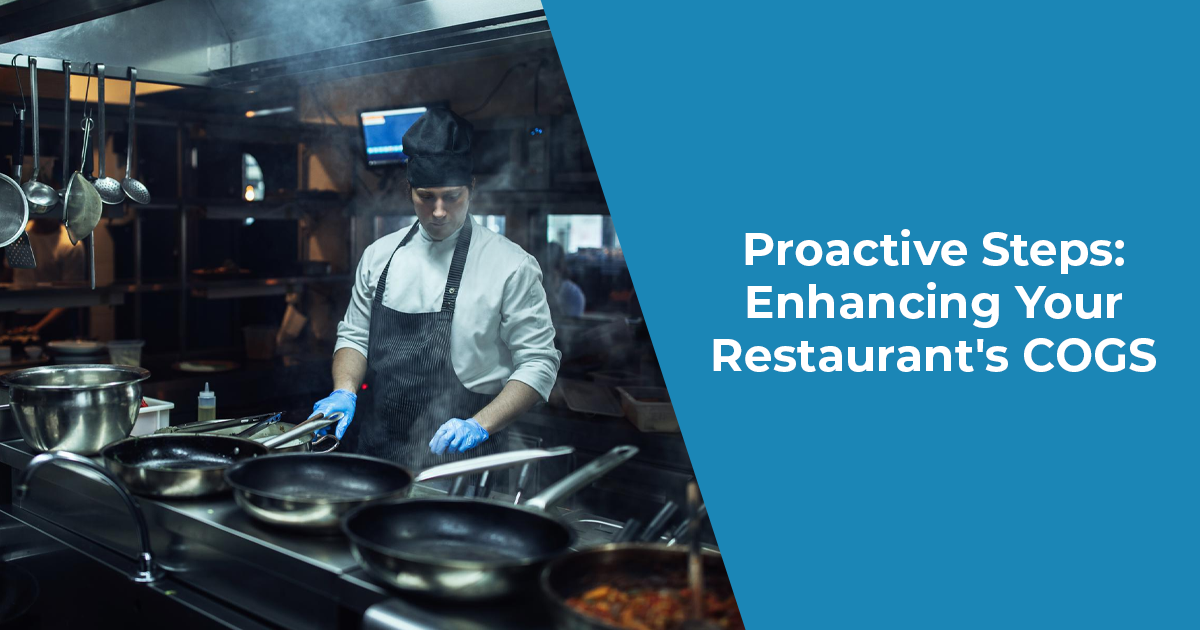Running a successful restaurant isn’t just about serving food—it’s also about managing costs effectively. One of the critical metrics in this business is the Cost of Goods Sold (COGS). Whether you’re familiar with COGS or exploring it for the first time, understanding and controlling it can significantly impact your restaurant’s profitability.
What are COGS? COGS stands for “Cost of Goods Sold.” In business, particularly in industries that involve selling products, COGS refers to the direct costs attributable to the production of the goods sold by a company. For a restaurant, the COGS specifically represents the total expenses associated with producing the food and beverages sold to customers within a defined period. Some of these expenses can include ingredients, packaging, and any direct labor expenses intricately tied to preparing the dishes that grace your menu.
Why do cost of goods sold matter? Think of it as the heartbeat of your restaurant’s financial health. It acts as a pivotal benchmark for evaluating operational efficiency and profitability. An accurate cost of goods sold calculation provides a clear panorama of how effectively your restaurant utilizes resources and aids in setting menu prices to ensure optimal profitability.
Traditionally, calculating COGS involved manual and time-consuming methods, leaving room for errors and delays. We are now entering an era of streamlined back-office technology—a game-changer in restaurant management. Leveraging automation gives operators access to real-time insights, enabling accurate and swift calculations. Here’s how:
Traditional COGS Calculation Process
- Manual tracking of inventory
- Labor-intensive calculations
- Prone to human errors and discrepancies
- Time-consuming reconciliation
Streamlined COGS Calculation with Technology
- Automated inventory tracking
- Real-time data analysis
- Reduced margin for errors
- Swift and precise cost breakdowns
Optimizing your cost of goods sold requires proactive strategies. Consider these actionable steps to elevate your restaurant’s cost efficiency:
- Regular Inventory Audits: Schedule routine checks to ensure accurate stock levels and identify potential discrepancies.
- Negotiating Supplier Contracts: Explore opportunities to improve pricing or terms with suppliers to lower ingredient costs.
- Minimizing Wastage: Implement waste reduction strategies and train staff to manage resources efficiently.
- Efficient Portion Control: Fine-tune portion sizes to minimize food wastage while ensuring customer satisfaction.
For independent restaurants, navigating the complexities of cost of goods sold can be transformative. Enter Back Office technology, designed to empower restaurateurs by offering:
Key Features of Back Office Technology
Inventory Management
- Real-Time Tracking: Back office technology offers real-time visibility into inventory levels, aiding in accurate COGS calculations.
- Inventory Optimization: Analyze stock levels, track ingredient usage, and set par levels to minimize waste and efficiently manage inventory turnover, directly impacting COGS.
Recipe Costing and Menu Engineering
- Precise Cost Analysis: Detailed breakdowns of ingredient costs per dish allow for accurate menu pricing based on COGS, ensuring profitability.
- Menu Optimization: Evaluate the profitability of each menu item, identify high-cost ingredients, and optimize recipes to maintain margins while meeting customer expectations.
Supplier Management and Purchasing
- Supplier Performance Analysis: Track supplier pricing, quality, and delivery efficiency to make informed purchasing decisions that impact COGS.
- Cost Negotiation: Utilize data insights to negotiate better prices or terms with suppliers, directly impacting the cost of ingredients and thereby reducing COGS.
Data-Driven Decision-Making
- Comprehensive Analytics: Access detailed reports and analytics on purchasing patterns, sales trends, and cost fluctuations, aiding in strategic decision-making for COGS optimization.
- Predictive Insights: Forecast demand, analyze historical data, and anticipate market trends to make proactive adjustments in purchasing and menu planning, positively affecting COGS.
Automated Expense Tracking and AP Automation
- Streamlined Invoicing and Payment: Automate invoice processing and payments to suppliers, reducing manual errors and ensuring accurate recording of expenses affecting COGS.
- Expense Visibility: Gain insights into all costs incurred, including supplier bills, labor expenses, and other overheads, contributing to a more accurate COGS calculation.
Integration with Accounting Systems
- Financial Transparency: Seamless integration with accounting functions ensures accurate tracking of COGS-related expenses and facilitates easier reconciliation and reporting.
- Budget Allocation: Allocate budgets and track spending against set targets, allowing for better control over expenses impacting COGS.
These features within Back Office technology collectively empower restaurant owners and managers with the tools necessary to meticulously manage and optimize their COGS, ultimately contributing to improved profitability and sustainable growth.
Controlling your COGS isn’t just an aspiration—it’s a necessity for sustained profitability among independent restaurants. Leveraging a partnership with Dining Alliance gives you access to innovative back-office technology and offers more than just simplified COGS management; it provides restaurateurs with a roadmap to success.
Remember, behind every exquisite dish lies a meticulously managed COGS. It’s the secret ingredient to financial resilience and enduring success in the competitive world of foodservice.
Click HERE to discover how Dining Alliance can help independent restaurants streamline food cost management or fill out the form below and one of our restaurant experts will contact you.










